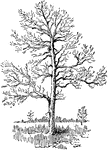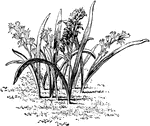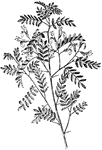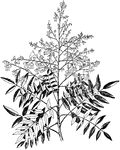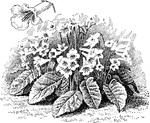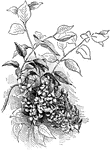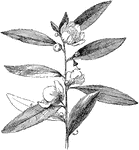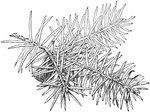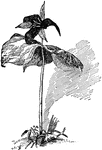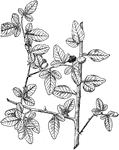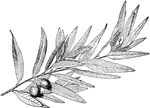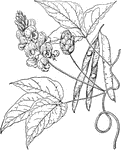
Manchineel Tree Stem & Fruit
An illustration of a manchineel tree stem and fruit. The Manchineel tree (Hippomane mancinella) is a…
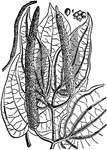
Betel Vine
"Betel vine. Betel, a species of pepper, a creeping or climbing plant, native of the East Indies." -Vaughan,…
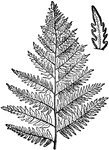
Bracken Branch
"End of Branch, Common Brake. Bracken (Brake), a species of fern very common in America and Europe generally,…

Ornamental Brackets
"Ornamental Brackets. Bracket, a short piece or combination of pieces, generally more or less triangular…
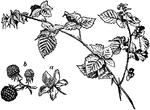
Common Bramble
"Branch of Common Bramble. a.-- Flower; b.-- Fruit. Bramble, the name commonly applied to the bush with…
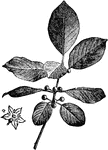
Alder Buckthorn
"Alder Buckthorn. Buckthorn, the name of an extensive genus of trees and shrubs, order Rhamnaceae."…
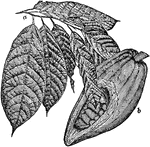
Cacao Fruit and Leaves
"Cocoa. a.-- branch with leaves; b.-- fruit (partly in section). Cacao (or Cocoa), the chocolate tree…
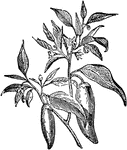
Capsicum
"Capsicum, a genus of annual, sub-shrubby plants, with a wheel-shaped corolla, projecting and converging…
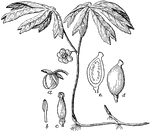
Mayapple
An illustration of a Mayapple plant. "a, the flower-bud with the bractlets; b, a stamen; c, the pistil;…

Indian Cucumber-root
An illustration showing both the flower (a) and fruit (b) of the Indian Cucumber-root plant. Medeola…
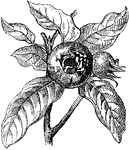
Leaves and Fruit of Common Medlar
The Common Medlar (Mespilus germanica) is a large shrub or small tree, and the name of the fruit of…
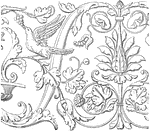
Friezes at Venice
In architecture the frieze is the wide central section part of an entablature and may be plain or—in…

Friezes at Venice
In architecture the frieze is the wide central section part of an entablature and may be plain or—in…
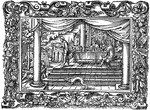
Virgil Solis Print
This is a print that is part of an illustrated Bible that was created by German printmaker Virgil Solis…

Pressure Variation Indicator
To monitor breathing gas pressure in the diving cylinder, a diving regulator usually has a high pressure…

Tea Strainer
A tea strainer is a type of strainer that is placed over or in a teacup to catch tea leaves.

Rake Head
This rake head is an agricultural tool consisting of a toothed bar fixed transversely to a handle, and…

Application of Steam Engine Jet Condenser used to Pump Well Water
An illustration showing the application of a jet condenser to pump a well. The steam enters the engine…

Ficus Carica Fig with Fruit and Leaves
A Mediterranean fig, Ficus Carica, with a branch with leaves and buds. The fruit, numbered 3, is sliced…
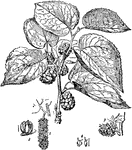
Black Mulberry Branch with Fruits and Leaves
A branch from a black mulberry with fruits and leaves. The plant have both male and female flowers are…
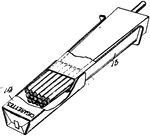
Cigarette Packer
A cigarette is a product consumed through smoking and manufactured out of cured and finely cut tobacco…
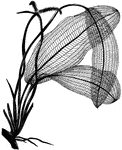
Lace-leaf Plant
An illustration of a Lace-Leaf plant also known as a Lattice Leaf or Lace Plant. The Lace-Leaf plant…

Drinking Cup
An illustration of a Madagascan drinking cup made from a leaf of the "Traveller's Tree".
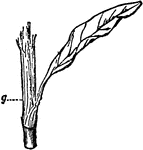
Stem and Leaf Part of Polygonum
"Polygonaceae, a natural order of Dicotyledons, containing 30 genera with about 700 species, chiefly…

Flowers and Leaves of Common Dock
"Polygonaceae is mainly a north temperate order. A few genera are tropical which has 125 species restricted…

Common Polypody Leaf with Sori
"Polypodium widely distributed throughout the world, but specially developed in the tropics. The species…

Leaf and Root of Common Polypody
A Common Polypody, or Polypodium vulgare, leaf and root. The fern is commonly found on walls, river…

Tool Combination Rake
A long-handled implement with a row of projecting teeth at its head, used especially to gather leaves…
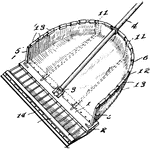
Multipurpose Rake
A long-handled tool with a row of teeth at its head; used to move leaves or loosen soil
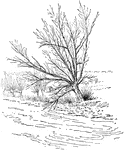
White Willow
Large willow tree of Eurasia and North Africa having greyish canescent leaves and grey bark
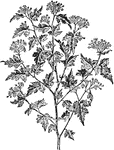
Stephanandra Incisaa
This is a plant belonging to the Rosaceaea genus, featuring wavy margined leaves.
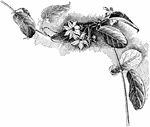
Stephanotis Floribunda
This plant is also known as the madasgascar jasmine, which feature dark leaves; sometimes waxy.

Syringa Villosa
This is a northern plant of northern China, featuring oval leaves and a rose type flowers.

Trifolium Repens
This is a white clover, bearing pink flowers and glossy leaves. This flora is common the US.
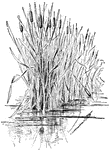
Typha Latifolia
Marsh plant featuring long flat leaves, commonly seen throughout North America, Europe and North Africa.
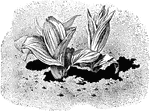
Veratrum Viride
Plant native to North America, featuring yellow leaves commonly used for medicinal purposes.
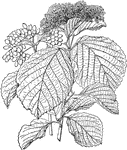
Viburnum Dilatatum
Perennial featuring flat topped flowers, bearing different color flowers depending on the seasons. Typical…

Yucca Treculeana
Plant member of the lily family, known for a lump of pointed leaves and flowering stalk.

Fabiana Imbricata
A Peruvian shrub bearing rather small pink and purple flowers, the leaves are known for its tonic.


